Making Portraits Personal with Guest Contributor John Parra
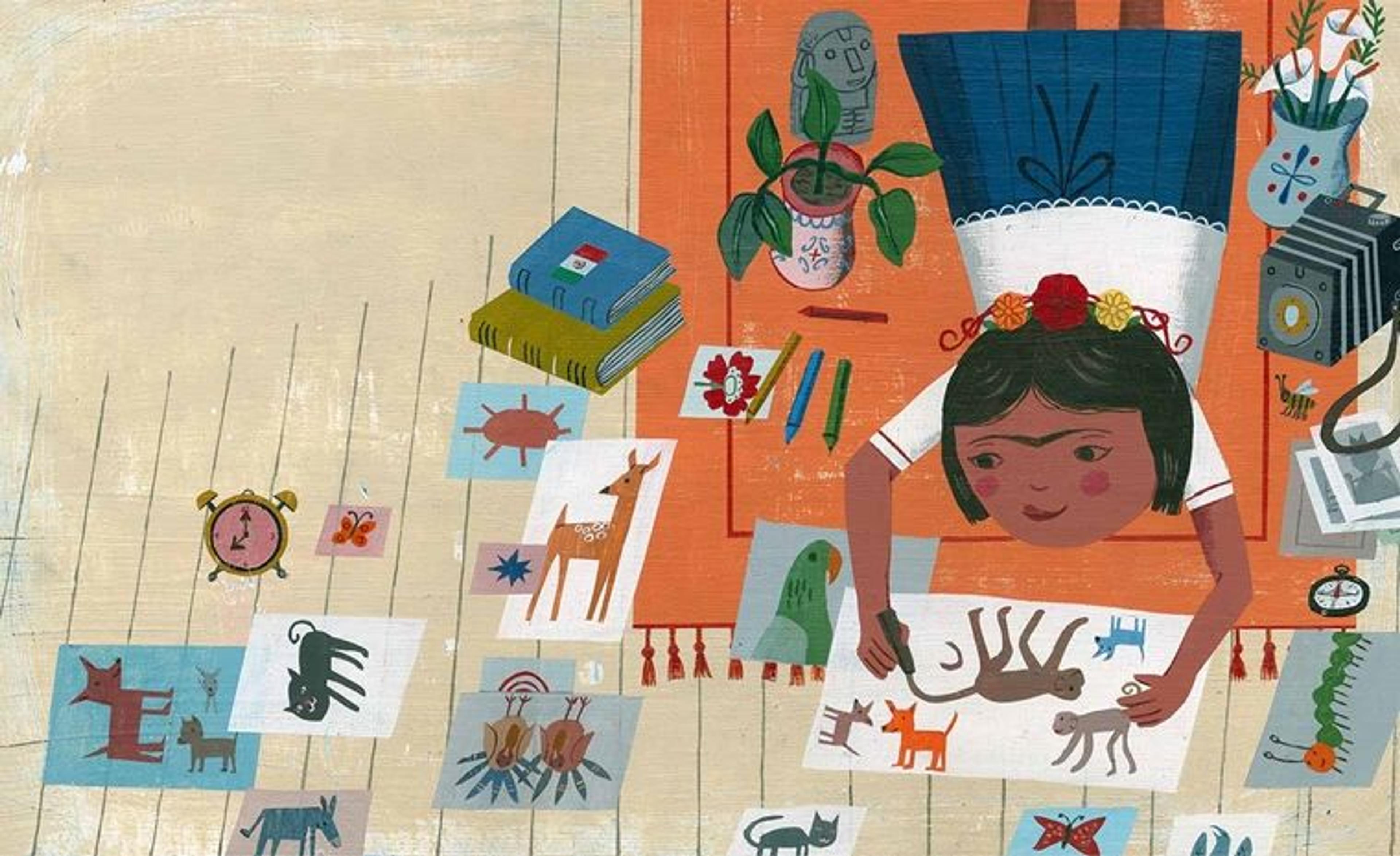
An illustration by John Parra of young Frida Kahlo drawing animals in her home
Have you ever looked at a portrait by a well-known artist? Perhaps a painting by van Gogh or Rembrandt? You may have noticed that there was something special about these artworks. Artists can use details to help portraits tell us more about the person being painted, drawn, or sculpted than what meets the eye. These details can tell us stories about personality, emotion, history, culture, and more.
Hello, my name is John Parra and I am a children's book illustrator. Many of my illustrated picture books are about real people. One special book I would like to share is titled Frida Kahlo and Her Animalitos, written by Monica Brown. It is a story that celebrates the life, work, and many pets of the iconic Mexican artist Frida Kahlo. Let me share with you some ideas I considered and steps I took to create my portraits of Frida.
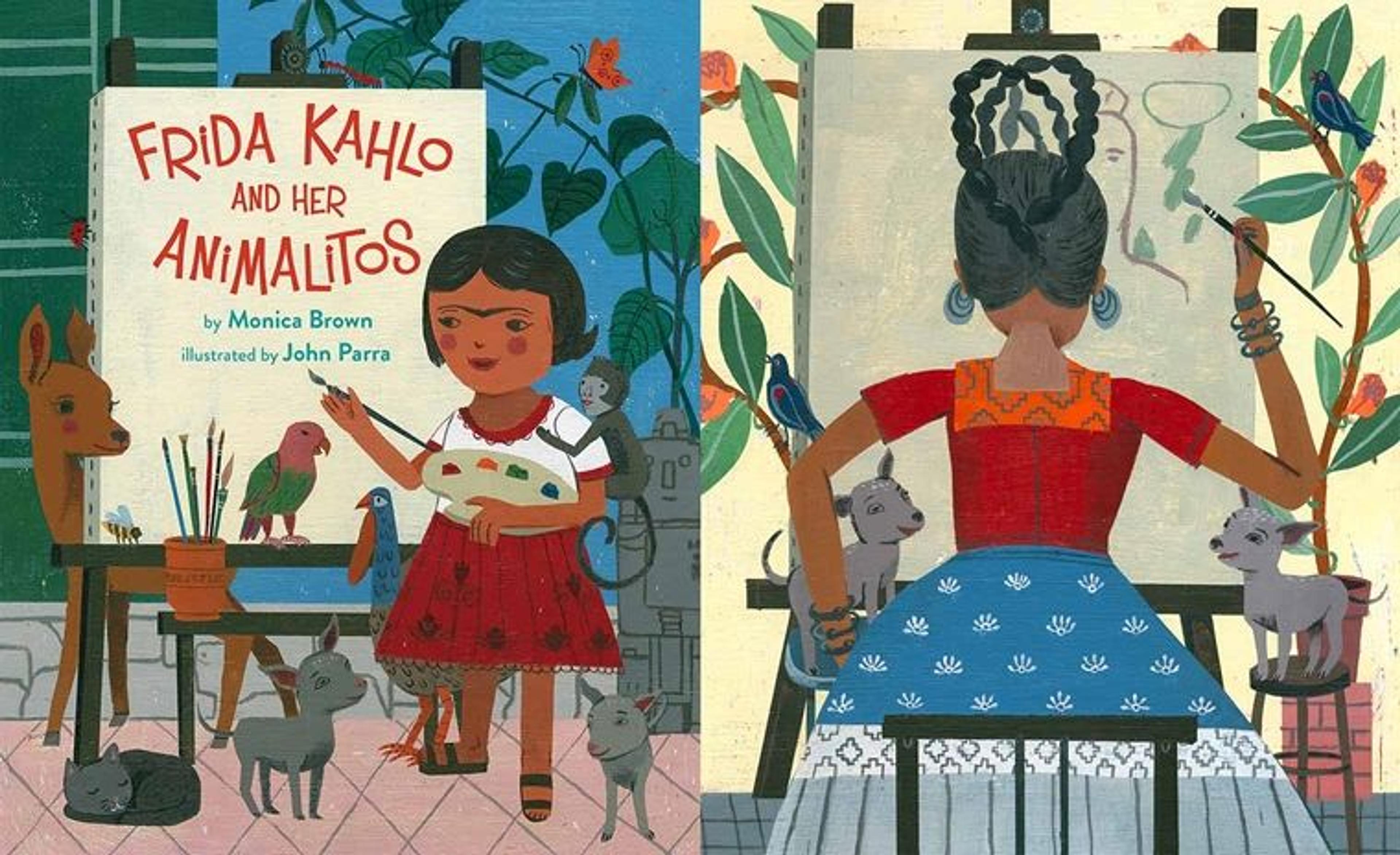
Book cover and illustration from Frida Kahlo and Her Animalitos
I looked to many inspirations to help me decide on the best way to create the art for this book. The first step I took was to examine pictures from Frida's life: family, home, history, clothes, style, school, pets, and of course Frida's paintings and drawings. She was known for her many personal and introspective self-portraits that celebrated her Indigenous culture.
Artists make all sorts of choices when they are creating an image. My goal was to be as thorough as possible so that any reader familiar with Frida's life and the places where she lived and worked would recognize my art as accurate in its presentation of the real people, places, and things. I also wanted to make sure the book was fun and accessible for readers of all ages. The author Monica Brown and I spoke about the importance of the color blue to the story. Frida's home in Mexico was painted a bright shade of blue, and is even known as La Casa Azul, or "The Blue House." Because blue was such a meaningful color to Frida Kahlo, and her family, I decided to use Azurite Blue paint for her home and other details, like objects and clothing, throughout the story.
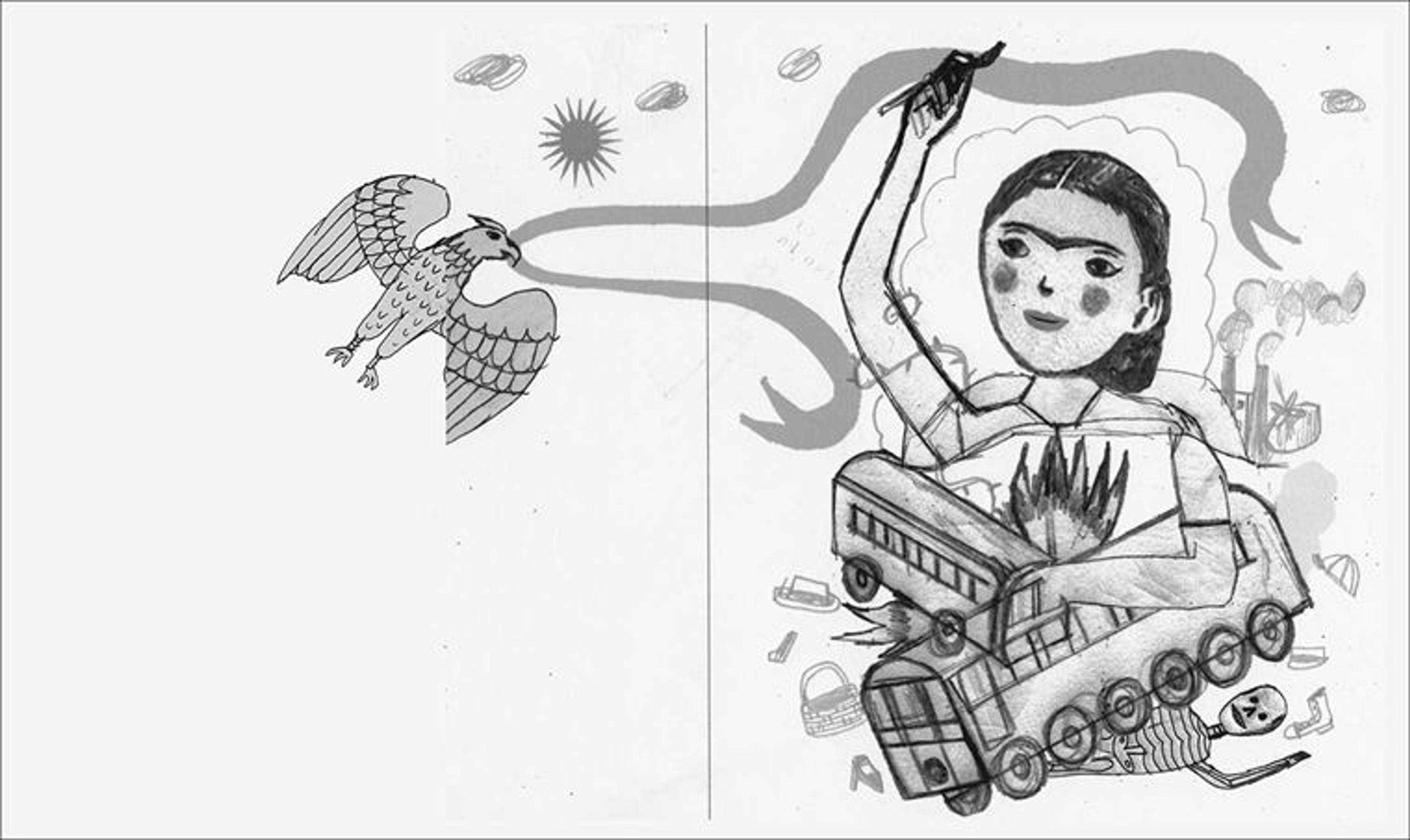
A preparatory sketch of an illustration from the book. Frida Kahlo often painted herself surrounded by things that were on her mind. My portrait of her includes a factory, train cars, skeletons, flames and more
Often, I am asked, "How do you make your art?" Below are steps showing my process as I paint a page from the Frida book. I like to work with acrylic paints on board prepared with a special white paint called gesso. After adding multiple foundational layers of color, I use sandpaper to sand into the paint to give it an old worn-out look for the background. Then I begin transferring the sketch to the board, masking out shapes with tape, and painting all the various elements. As the characters and scene take shape, the final task is to add shading and detail to the art. I try to break everything down into small steps to accomplish the work. Each painting may take up to a week and a finished illustrated book takes me anywhere between six to eight months to complete.
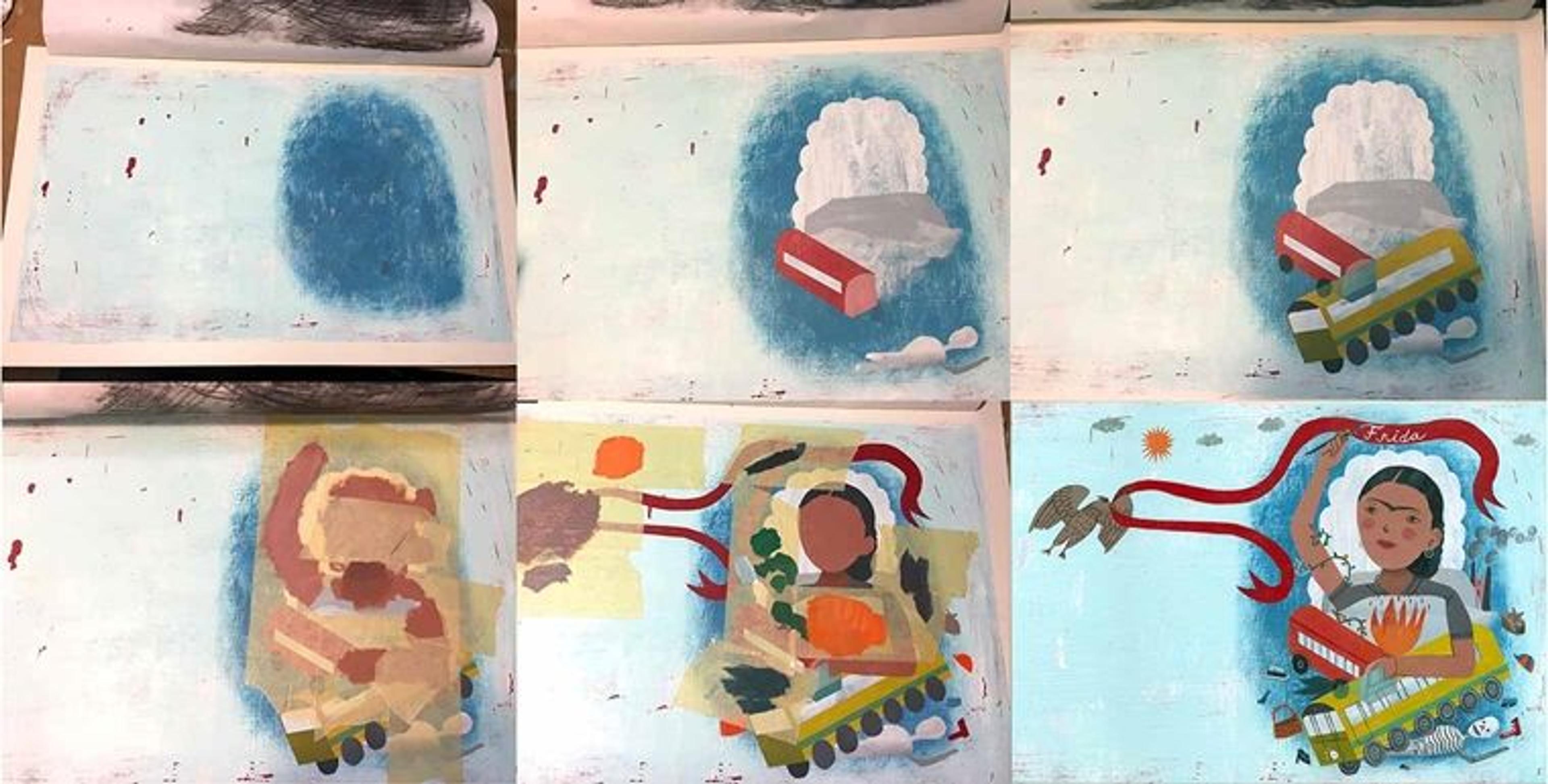
When you look at the painting step by step, you can see how each layer was an opportunity to add style to the portrait
As an artist, being prepared is an important part of the process. I always make sure my paints, brushes, and boards are ready to go in my workspace. Do you have a special place in your home where you like to create art?
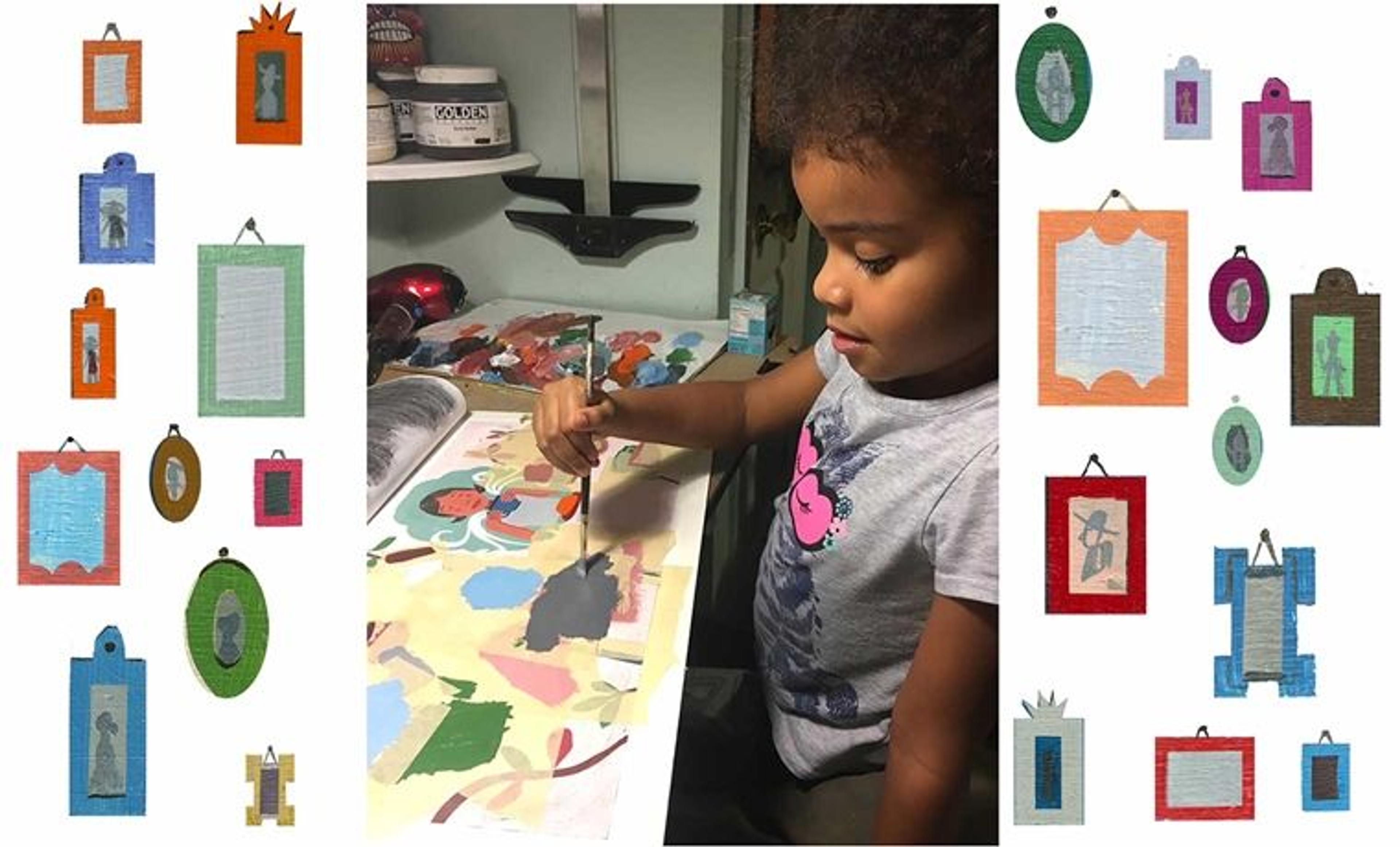
The artist and his step-granddaughter Sophie have a special area in their home where they like to make art
Remember: artists are always on the lookout for ideas. Perhaps it will come from a family trip, a nature hike, or a visit to a museum. It could come from a book you read or a favorite piece of music, or perhaps from someone you know or admire. It could even come from you.
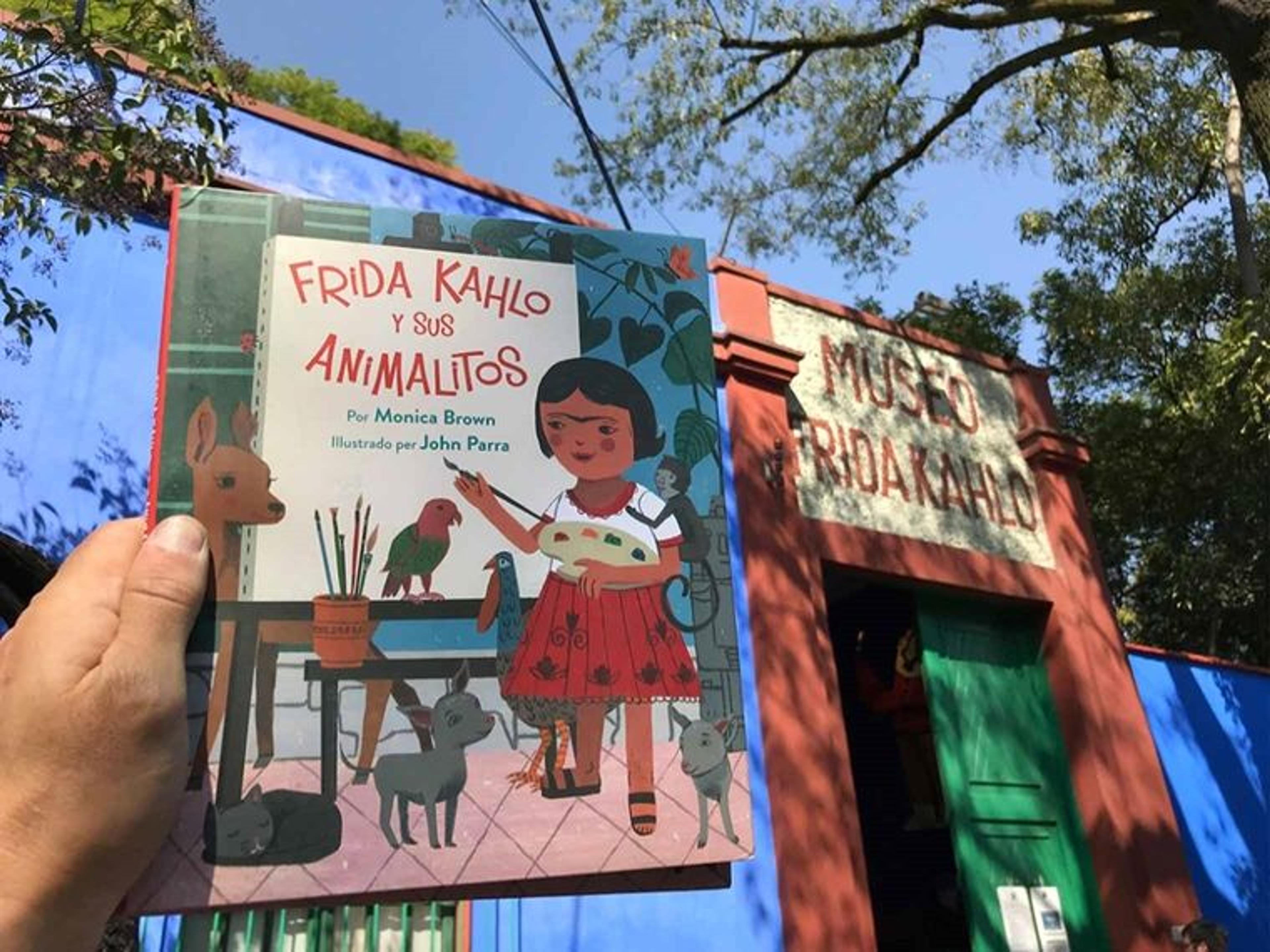
Frida Kahlo and her Animalitos in front of Frida Kahlo's home, La Casa Azul, in Mexico City
What details would you include in your own self-portrait? What art supplies will you use—brushes, pencils, something else? Will you include your favorite colors? It's up to you as the artist... let's see some drawings! Send your completed self-portrait to metkids@metmuseum.org for a chance to be featured on our site.
All illustrations © 2017 John Parra, courtesy of NorthSouth Books, Inc
Photos courtesy of Matt Parra and John Parra


John Parra
John Parra is an award-winning illustrator, best known for his art illustrated, Latino themed, children’s picture books. For his work he has received many awards and accolades including: The American Library Association’s Pura Belpré Honors, The Christopher’s Award, and The Golden Kite Award from The Society of Children’s Book Writers and Illustrators. Parra’s original artwork has also been showcased and displayed in numerous gallery shows and museum exhibitions throughout the United States and abroad with many paintings now residing in private collections. He has taught art at the Carnegie Art Museum in Oxnard, CA and regularly speaks as a visiting artist at schools and literary conferences across the country, advocating art and reading education.